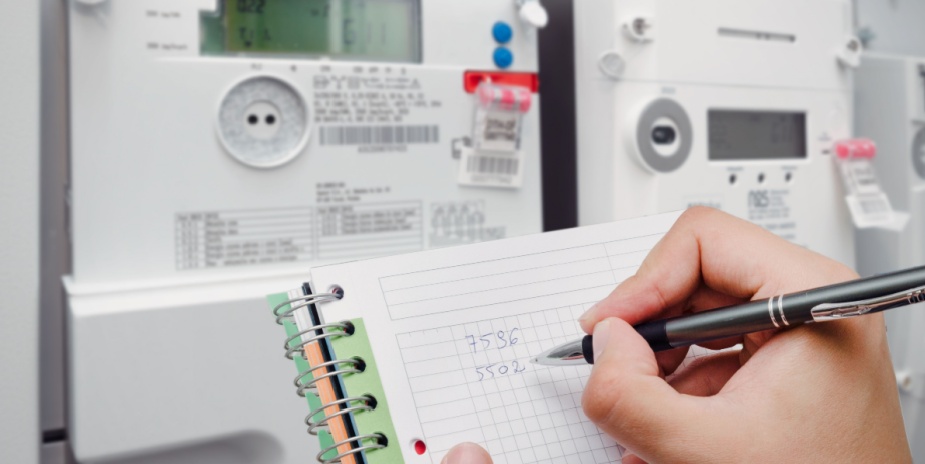Electricity meters in Australia: Everything you need to know!

Electricity meters might not be the most glamorous part of your home, but they play a vital role in how your electricity usage is measured and billed.
Whether you’ve just moved into a new property or you’re considering switching energy providers, understanding how electricity meters work in Australia can help you make more informed decisions about your energy use and costs.
This guide breaks down the different types of meters in use across the country, including smart meters, accumulation meters, interval meters, and solar meters.
We’ll also cover where to find your meter, who reads it, and how to make sure you're getting the most out of your electricity plan.
Types of electricity meters in Australia
Australia has a few key types of electricity meters in use, each with its own features, benefits, and limitations. The type of meter installed at your property can affect how your electricity is charged, whether you're eligible for time-of-use rates, and how easy it is to monitor your usage.
Let’s break them down in detail:
Smart meters (digital advanced meters)
Smart meters are digital devices that record electricity usage in real time and transmit data remotely to your energy retailer. They send usage data every 30 minutes, allowing for accurate, time-based billing.
Pros
- No need for manual meter readings
- Enables time-of-use pricing (off-peak savings)
- Helps track usage more precisely via apps or portals
- Supports solar, battery storage, and demand management
- Fault detection and quicker service restoration
Cons
- Installation may involve upfront fees in some states
- Time-of-use tariffs can lead to higher bills if energy use peaks during peak times
- Privacy concerns (rare but raised)
Smart meters are now mandatory for most new and replacement installations in Victoria, and increasingly rolled out across NSW, SA, and Queensland.
Accumulation meters (Flat-rate analogue meters)
These are older, analogue meters that simply record the total amount of electricity consumed over time. They do not record when the electricity is used.
Pros
- Simple to understand
- Works with flat-rate tariffs
Cons
- Requires manual meter reads
- No visibility of real-time usage
- Cannot support time-of-use tariffs or solar export
- Slower fault detection
Still found in some older homes, particularly in WA, NT, and Tasmania, though being phased out in most areas.
Interval meters
Interval meters record electricity usage in 30-minute intervals but require someone to physically download the data during a scheduled meter read.
Pros
- Supports time-of-use pricing
- More accurate than accumulation meters
- Helps better understand consumption patterns
Cons
- Still requires manual reading or on-site data extraction
- Being replaced by smart meters in many regions
Installed in many homes across NSW, QLD and SA prior to the smart meter rollout.
Solar meters (Bi-directional meters)
Solar meters—often smart meters—track both electricity consumed from the grid and excess solar energy exported back into the grid.
Pros
- Required for feed-in tariffs
- Measures both import and export
- Enables homeowners to get credits for solar exports
Cons
- Must be compatible with your inverter
- May require upgrade if switching to solar or battery
Any property with a solar PV system across Australia will typically have or need a solar-compatible meter, often installed as part of the solar setup.
What type of electricity meter is best?
The best type of meter depends on your home, energy usage habits, and whether you use solar.
- Smart meters are ideal for most modern households, especially those seeking to reduce energy bills with time-of-use rates or solar export options.
- Accumulation meters may suit those on legacy flat-rate plans, though they offer little control or insight.
- Interval meters are a mid-point option but are becoming obsolete.
- Solar meters are essential if you’re producing your own electricity and want to access feed-in tariffs.
For households looking to take advantage of smart home technology, battery systems, or detailed usage tracking, smart meters are the clear choice.
Where to find your electricity meter
Your electricity meter is usually located:
- In a meter box on the outside of your property (often near the front)
- In apartment buildings, meters may be grouped in a central cabinet or utility room
- In rural properties, sometimes inside a garage or utility shed
Check with your landlord or body corporate if you're unsure.
Who reads your electricity meter?
Smart meter
Your usage data is automatically sent to your energy provider, usually every 30 minutes. No one needs to physically read it.
Manual meter
A meter reader, contracted by your electricity distributor or retailer, will visit your property every 3 months or so. If your meter is not accessible, you may be asked to provide a self-read using an app or photo upload.
Want to take control of your energy costs?
Understanding your electricity meter is just the first step. The next is making sure you’re on the right energy plan.
At Compare Energy, we make it easy to compare electricity providers, understand your metering setup, and find a plan that suits your usage habits - whether you're in a single-family home, rental property, or solar-powered setup.
Contact Compare Energy today on 1300 790 106 to speak with our friendly team and discover better electricity plans tailored to your needs. It's time to take the guesswork out of energy.

